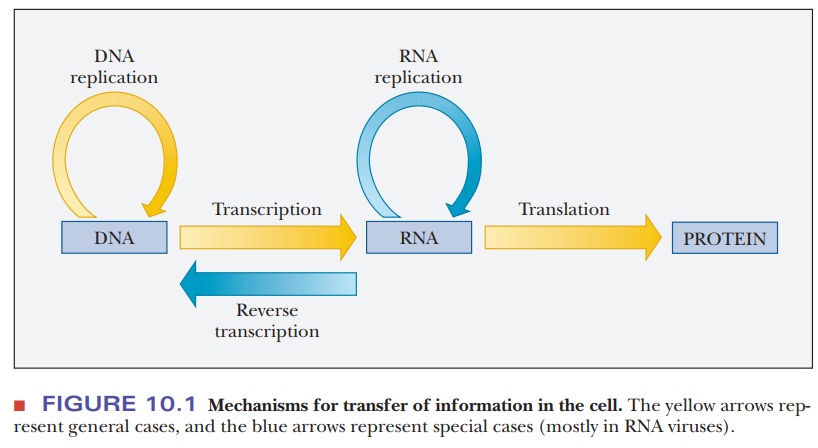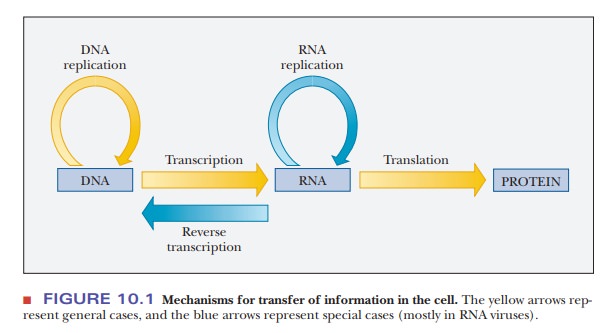Chapter: Biochemistry: Biosynthesis of Nucleic Acids: Replication
The Flow of Genetic Information in the Cell

The Flow of Genetic Information
in the Cell
The sequence of bases in DNA encodes genetic information. The duplication of DNA, giving rise to a new DNA molecule with the same base sequence as the original, is necessary whenever a cell divides to produce daughter cells. This duplication process is called replication. The actual formation of gene products requires RNA; the production of RNA on a DNA template is called transcription. The base sequence of DNA is reflected in the base sequence of RNA. Three kinds of RNA are involved in the biosynthesis of proteins. Of the three, messenger RNA (mRNA) is particularly important. A sequence of three bases in mRNA specifies the identity of one amino acid in a manner directed by the genetic code. The process by which the base sequence directs the amino acid sequence is called translation. In nearly all organisms, the flow of genetic information is DNA - > RNA - > protein. The only major exceptions are some viruses (called retroviruses) in which RNA, rather than DNA, is the genetic material. In those viruses, RNA can direct its own synthesis as well as that of DNA. The enzyme reverse transcriptase catalyzes this process. (Not all viruses in which RNA is the genetic material are retroviruses, but all retroviruses have a reverse transcriptase. In fact, that is the origin of the term retrovirus, referring to the reverse of the usual situation with transcription.) In cases of infection by retroviruses, such as HIV, reverse transcriptase is a target for drug design. Figure 10.1 shows ways in which information is transferred in the cell. This scheme has been called the “Central Dogma” of molecular biology.

Summary
Before cells divide, they must synthesize a new
copy of DNA. This process is called replication.
The RNA
sequence of messenger RNA is used to direct the synthesis of proteins in a
process called translation.
Related Topics